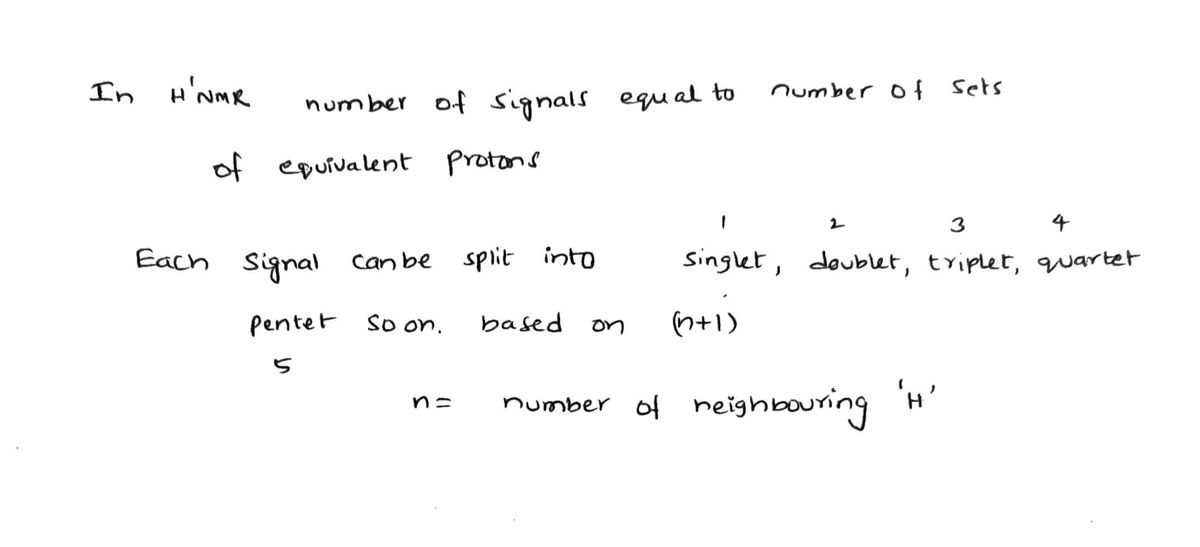Chemistry
10th Edition
ISBN:9781305957404
Author:Steven S. Zumdahl, Susan A. Zumdahl, Donald J. DeCoste
Publisher:Steven S. Zumdahl, Susan A. Zumdahl, Donald J. DeCoste
Chapter1: Chemical Foundations
Section: Chapter Questions
Problem 1RQ: Define and explain the differences between the following terms. a. law and theory b. theory and...
Related questions
Question
An uknown organic compound with molecular formula C9H10O2 find DUI, draw the structure of the compound on both HNMR and 13CNMR spectra and assign all peaks, please see attached picture below

Transcribed Image Text:**NMR Spectroscopy Analysis**
**Top Spectrum**
The top graph is a Proton Nuclear Magnetic Resonance (^1H NMR) spectrum. It displays peaks corresponding to different hydrogen environments in a molecule.
- **Chemical Shifts (in PPM):**
- At approximately 9.5 ppm, there is a peak labeled 1H, indicating the presence of one hydrogen in this environment.
- Around 7.5 ppm, a peak labeled 4H suggests four hydrogens in this chemical environment.
- Near 3.5 ppm, a peak labeled 2H indicates two hydrogens in this environment.
- Lastly, at about 1.2 ppm, a peak labeled 3H signifies the presence of three hydrogens.
The position and number of these peaks can help identify the structure of the compound by indicating the chemical environments of the hydrogens.
**Bottom Spectrum**
The bottom graph illustrates a Carbon-13 Nuclear Magnetic Resonance (^13C NMR) spectrum. This graph provides information on the different carbon environments within the molecule.
- **Chemical Shifts (in PPM):**
- Peaks appear at approximately 190 ppm, 160 ppm, 130 ppm, 70 ppm, and 20 ppm.
Each peak represents a distinct set of equivalent carbon atoms. The chemical shifts provide clues about the functional groups present in the molecule. Typically, higher ppm values indicate carbon atoms that are more electron-deficient, often due to electronegative atom attachments or unsaturation in the molecular structure.
**Conclusion**
Both ^1H NMR and ^13C NMR spectra are crucial for elucidating the molecular structure, helping chemists determine the presence and type of various functional groups and the overall connectivity of atoms within a molecule.
Expert Solution
Step 1

Step by step
Solved in 3 steps with 3 images

Recommended textbooks for you

Chemistry
Chemistry
ISBN:
9781305957404
Author:
Steven S. Zumdahl, Susan A. Zumdahl, Donald J. DeCoste
Publisher:
Cengage Learning

Chemistry
Chemistry
ISBN:
9781259911156
Author:
Raymond Chang Dr., Jason Overby Professor
Publisher:
McGraw-Hill Education

Principles of Instrumental Analysis
Chemistry
ISBN:
9781305577213
Author:
Douglas A. Skoog, F. James Holler, Stanley R. Crouch
Publisher:
Cengage Learning

Chemistry
Chemistry
ISBN:
9781305957404
Author:
Steven S. Zumdahl, Susan A. Zumdahl, Donald J. DeCoste
Publisher:
Cengage Learning

Chemistry
Chemistry
ISBN:
9781259911156
Author:
Raymond Chang Dr., Jason Overby Professor
Publisher:
McGraw-Hill Education

Principles of Instrumental Analysis
Chemistry
ISBN:
9781305577213
Author:
Douglas A. Skoog, F. James Holler, Stanley R. Crouch
Publisher:
Cengage Learning

Organic Chemistry
Chemistry
ISBN:
9780078021558
Author:
Janice Gorzynski Smith Dr.
Publisher:
McGraw-Hill Education

Chemistry: Principles and Reactions
Chemistry
ISBN:
9781305079373
Author:
William L. Masterton, Cecile N. Hurley
Publisher:
Cengage Learning

Elementary Principles of Chemical Processes, Bind…
Chemistry
ISBN:
9781118431221
Author:
Richard M. Felder, Ronald W. Rousseau, Lisa G. Bullard
Publisher:
WILEY